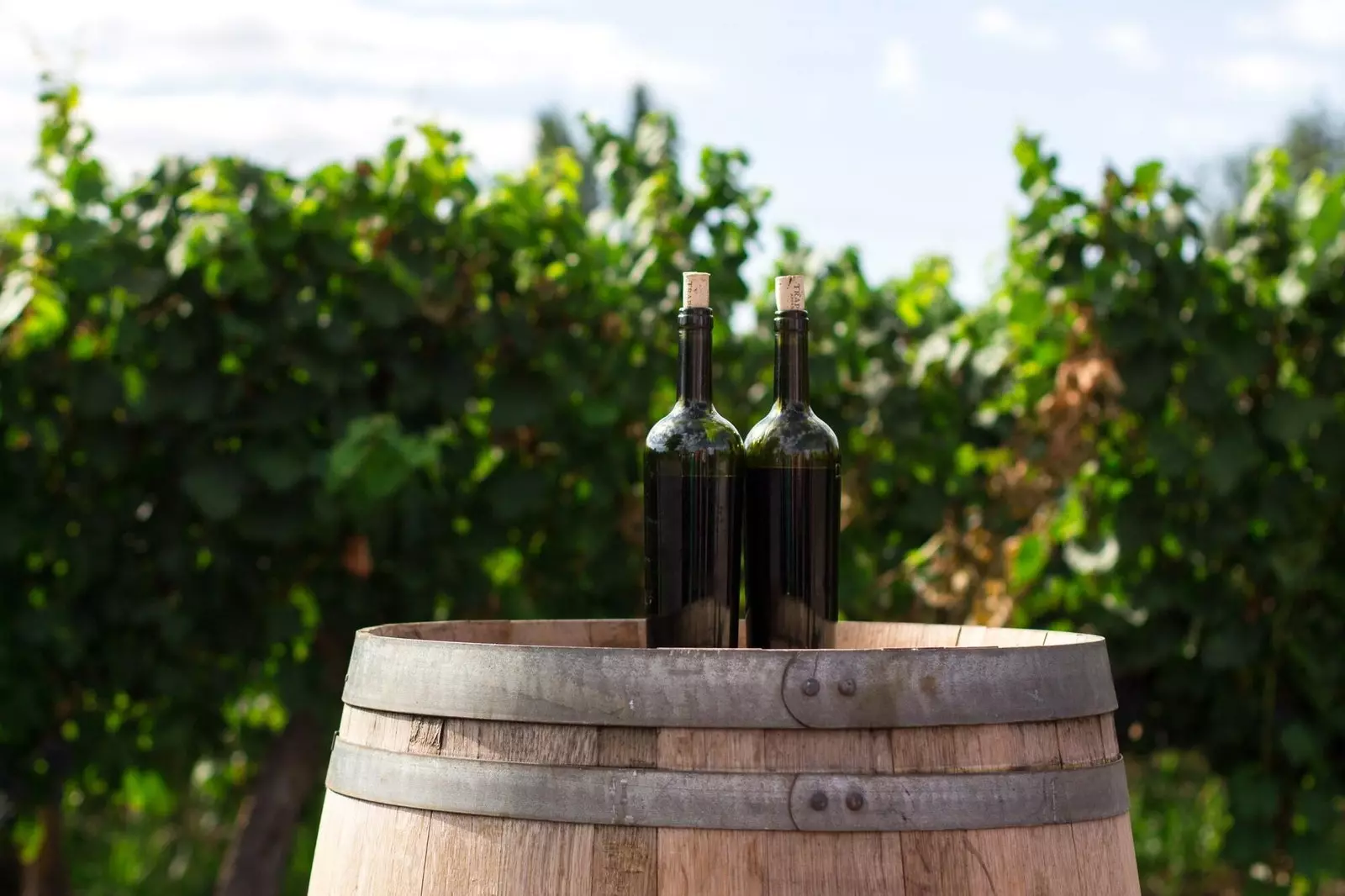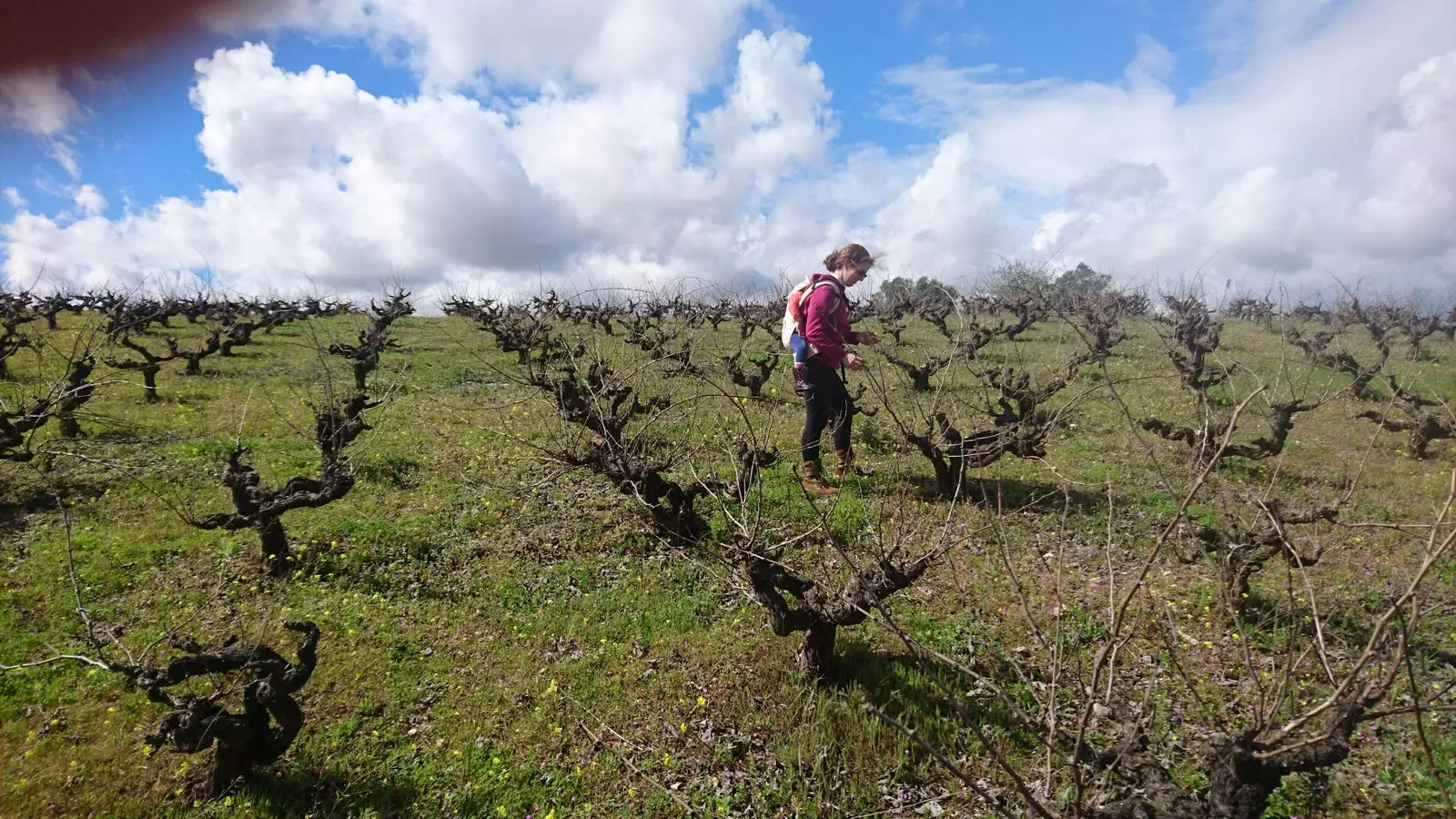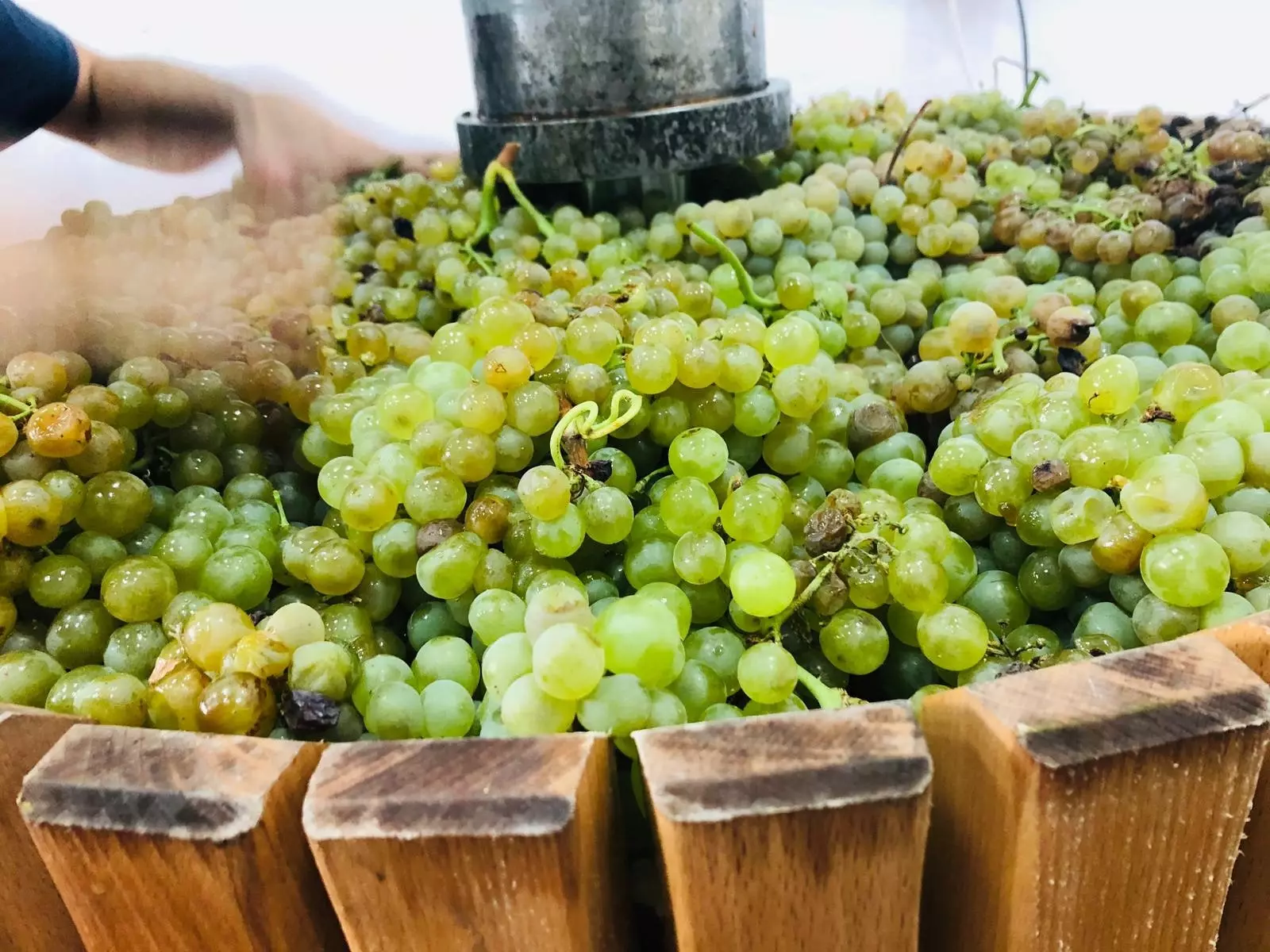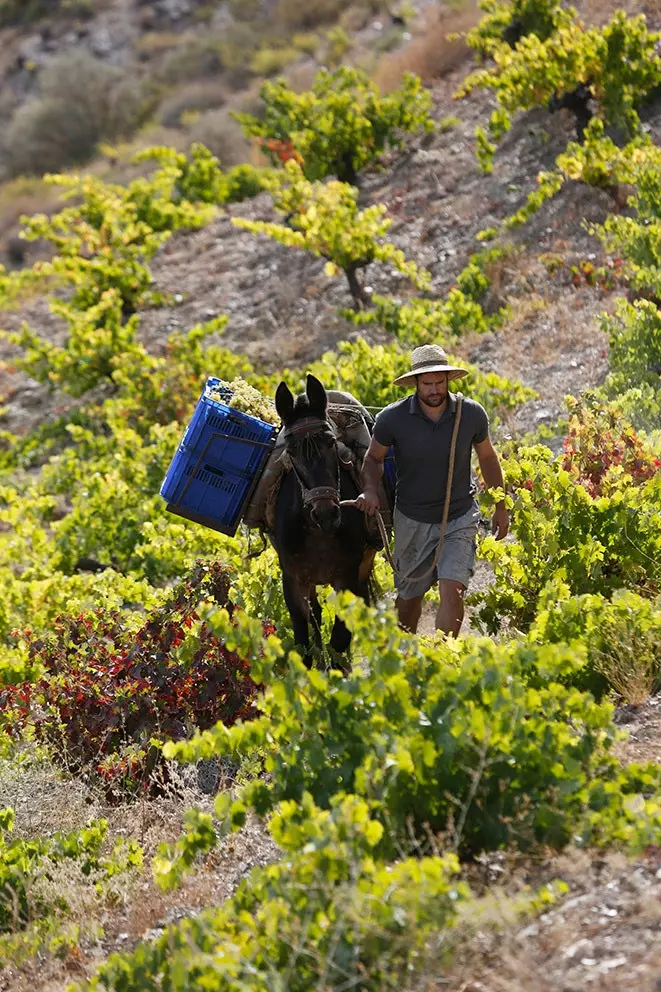
Natural wines to smack your lips.
"Natural wine is a wine that is made from grapes, and that's it" . With this simple and forceful phrase, he usually starts David Raya each one of his tastings conducted at Finca La Donaira, that luxury rural complex anchored in the Serranía de Ronda where we would all like to stay and live forever. He is the sommelier of this unique and special hotel , and like everything that is worked on it, it defends first and foremost what is natural, what is free of artifice. In this case, the wines.
And the point is that, although many of us are caught by surprise hearing that statement — "So, unnatural wines, what are they made with?" we ask ourselves—, this is the first commandment to learn from this oenological trend. The answer to our doubts is given by David: “ In Europe alone, more than 300 chemical components are allowed in wine . And they are used, whether to change the acidity, the sweetness, the color... Something that does not happen in the natural ones”. We still know little about this universe, but we have just been conquered by it.
Of course, that - the conquest - is very easy to happen with David involved: the passion with which the Barcelonan speaks of these special wines is contagious from the first moment. Computer scientist by origin, musician by passion and sommelier by devotion trained in the prestigious WSET (Wine And Spirits Education Trust) , he lived in New York, in Poland and in Berlin before landing in this little corner of Malaga, and in his career in the world of wine it was always clear to him: “Natural wines are unique, they are alive, they are respectful with the environment and fun” . Clearer, the water.
Today he takes us by the hand to tour six Andalusian natural wine cellars . We delve into the history of each one of them, into the whys and wherefores of his philosophy and, above all, into its flavor. Do we taste? we taste.
MUCHADA-LÉCLAPART: THE ESSENCE OF SANLÚCAR THAT LIVES ON
David says that a few years ago Alejandro Muchada, Cadiz winegrower strongly rooted to the land of him, and David Léclapart, renowned French champagne producer , came together to shape this unique project, Muchada-Léclapart which, he hears, has given a lot to talk about: it turns out that what they have brought up has been pure wine art, and in one of the places, moreover, with the most tradition in the world of wine. In the Marco de Jerez , under the protection of that Atlantic that surrounds everything and next to the very banks of the Guadalquivir.
Specifically in the albariza lands of the acclaimed Pago Miraflores, in the historic Sanlucar de Barrameda , where they harvest their 100% palomino grape vines , many of them with between 60 and 80 years of history: they looked for clones of that palomino of yesteryear that, unlike those cultivated since the Sherry revolution in the 19th century —which yielded up to 20 kilos of grapes per plant—, they only generated about a kilo and a half.
The objective? The elaboration of a dry white wine that does not have a flower veil or added alcohol , but to focus all its essence exclusively on what happens in the vineyard and in the winery. The result of so much love and care could only be one: a special wine, with a certain saline touch, fresh and that makes us dream of accompanying it —oh, mother— of some prawns from Sanlúcar , of course. Although David, in this case, dares something else: “with a little foie the flavor explosion is incredible” . We take note.

In La Palma del Condado, Luz, from Bodegas Garay, was born.
LUZ, A LOVE STORY BETWEEN VINEYARDS
It had to be in Huelva, where else? Where the sun shines in a special way, where the light marks the life and character of its people... it also leaves its mark on its wines. In the surroundings of the Doñana National Park and, specifically, in La Palma del Condado, Luz, from Bodegas Garay, was born , the result of a story that began 12 years ago when Mario Garay and Ana González bought their first zalema grape vineyard , a somewhat unknown variety but with a very clear virtue: its oxidation process is fantastic . Those that began with 5,000 square meters are now 50,000, all certified as organic, being the first in Huelva to take the step.
Thanks to its four days of maceration in clay pots acquires a perfect balance, with a delicious salty point that gives it a most gastronomic touch. A tribute to a wonderful land made even from color: the orange tone of the broths remember, its promoters confess, those sunsets in Matalascañas or El Rompido. Is it possible to be more from Huelva? We already tell you: no.
"LAS CEPAS DE PACO", BACK TO THE ROOTS
David tells us on this occasion about one of the wines that he himself is responsible for serving at La Donaira: behind “Las Cepas de Paco” is Raúl Moreno , a Sevillian who, after living for many years in countries like Australia, France or Georgia, opened his mind to understand that there were many other ways of producing wine, and he decided to return to his land to shape his own.
And where did he settle? Well, in Sanlúcar de Barrameda, of course: there, in the privileged albariza lands of Viña del Gurugú and Pago Miraflores, was where El Reflejo originated , your pretty boy, drawn from old palomino from strains that reach 80 years. Once the grapes are harvested, the party arrives: its elaboration process shows that sometimes, by playing, real treasures come out.
Thus, Raúl bets on first sunbathing the grapes for 48 hours, so that they retain a little more of their acidity and finish ripening. Then he leaves the wine to ferment in Qvevris, traditional tanks brought from Georgia. , where the history of wine goes back 8 thousand years. In them he macerates the skins for 21 days before separating the skins from the broth and burying the Qvevris in boxes covered with albariza earth —in Georgia it is done on the ground, but here he rules creativity—. To end, the wine spends another six months stored in old manzanilla barrels . The result? A delicate wine with saline and deep notes . After all, the closest thing to an exquisite Sherry wine, but without the alcohol gradation of these. In other words: an absolute treasure.

Viñerón covers both native grapes such as Muscat, as well as some already forgotten, such as Montúa.
BARRANCO OSCUSO, A WINE OF HIGH
And from Cádiz, to the mountains of Granada: in the idyllic place that forms the Contraviesa, a small mountain Surrounded, on one side, by the high peaks of the Sierra Nevada with the Mulhacén as a backdrop, and on the other, by the exoticism of the Costa Tropical bathed by the Mediterranean, originates from this pinot noir which —we had no doubt— is absolute top.
Behind Dark Barranco is Manuel Valenzuela, born in Granada although with a past that led him to live in Barcelona and go into exile in France to end up returning to his roots, willing to devote himself to cultivating the land. Thus, between fig and almond trees, in 1980 he started planting his own vines: at an altitude of 1,300 meters , and with hard and slate-based soils, these grapes would grow strong, with very thick skins molded by the southern sun.
Manuel knew from the beginning that he wanted nature to take its course, and in this way he became one of the pioneers in the world of natural wines in Spain. His great jewel of him? The Pinot Garnet , which is not produced annually, but only after optimal harvests, macerates in underground cellars for at least 10 years and gives rise to a wine with personality and character, like Manuel himself and the land of Granada itself. In this land traditionally produced the so-called Costa wine, a rosé that rarely went abroad since it was practically consumed in the area. Now, however, things have changed, and Granada —its wines— achieve everything they set out to do. It was not be for lowerly.
BODEGAS VIÑERÓN, GO FOR A SPARKLING!
That's how it is: in this small winery installed in Coín whose vineyards grow in the heart of Axarquia , that land of Malaga where Muscatel wine is a way of life, there is also room for projects that are very special. One of them, this one that Samuel Párraga has started with his oenology studies in Puerto de Santa María barely finished two years ago: with the desire and wisdom of someone who has things very clear, in 2020 he gave life to Bodega Viñerón.
And what Viñerón embraces is, of course, the authentic, in this case native grape varieties such as Muscatel, of course, but also others already forgotten or almost extinct in the area like the montúa, the calona, and even the rome , which are the basis of the three wines that he has so far labeled: a sparkling wine —Los Quireles , refreshing and perfect as an aperitif—and two sparkling reds —Tinajuelas , ideal to accompany meats such as lamb—made by the ancestral method. Three treasures overflowing with the essence of Malaga, but renewed.
And it is that in this sense David is very clear: achievements like Samuel's also imply a revolution in the world of wine , which goes beyond the line marked by centuries-old traditions to show that other proposals are also possible. And besides, they are delicious.
EL PELUSO, THE STORY OF A LIFE
And now it's time to talk about history, life, tradition. From a family, the Garcias of Verdeviques , which for generations has been able to keep alive the heritage of giving essence to wines that, as special as they are, only 300 bottles are produced per year . We speak —David speaks to us— of The Fuzzy , seated, like Dark Barranco, in the slate lands that surround Sierra Nevada , where its vineyards are over 130 years old and grow at high altitudes, bathed in the southern sun.

The García de Verdevique family have been able to give essence to wines of which only 300 bottles are produced per year.
A region famous for its rosés, in El Peluso —name given in honor of the family's great-grandfather, who saw how his vineyards died before the phylloxera attack—, they also opt for them, only in their case they have more than 30 years of barrel oxidation : we are talking about a wine that, by coincidence of life, was never sold, and was kept in a 640-litre barrel to which, from time to time, a little new wine of the same type is added to replace it. A wine made from the Jaén Negro, Jaén Blanco, Perruno and Vigiriego grape varieties. which is pure fantasy.
The best way to try it? With a good cheese and the best views: those that combine the postcard of Mulhacén and the Mediterranean . Can you ask for more?
AND AS A GIFT: ROCA VIVA WINES
Exactly: this extra proposal comes from the hand, directly, of David himself, who after tasting, searching, recommending and pairing so many natural wines... he decided to embark on the adventure of making his own . Well, yours along with two other partners: on the one hand Juan Espino, farmer who had old muscatel vines in the Manilva area —opposite the Strait of Gibraltar—, and on the other, Jorge Hoya del Zaud, whose vineyards are grown in those Alpujarra mountains that the sommelier loves so much.
And with wines from one origin and another, what they have been up to is the elaboration of a tempranillo, a red, and a sparkling rosé with those who are giving themselves the license to enjoy inventing, and watch out, because it seems that things are not going wrong. In clay jars, the breeding of other of its strong bets is also being developed. Of course, there are no secrets that are worth in this challenge: "just listen to the land, listen to the wine... and do what it asks of me", says David . Looking forward to testing the result.
